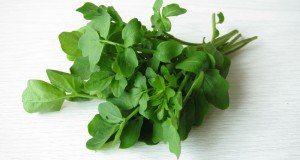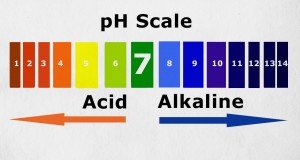LOWER the risk of deadly plaque buildup by 95 percent with pine bark and gotu kola
(NaturalHealth365) Heart disease, currently the number one killer in the nation, claims over 610,000 lives every year. And, we know that the most common type of heart disease (coronary artery disease) is caused by atherosclerosis – a buildup of plaque in the arteries.
Now, research shows that a combination of two natural compounds – French pine bark and gotu kola – has exciting potential to act against atherosclerosis.
This pair of natural extracts can prevent and even reverse the progression of atherosclerosis, while helping to prevent the breakdown and rupture of plaque that can trigger a deadly blood clot or heart attack.
How to effectively target plaque with French maritime pine bark extract
The pine bark studied by the researchers isn’t just any old pine bark – the compound is derived from the tree botanically known as Pinus pinaster, which grows only along the southwestern coast of France.
Rich in procyanidins, bioflavonoids and phenolic acids, French pine bark extract reduces the expression of the pro-inflammatory cytokines that trigger inflammation and plaque formation.
French pine bark has also been shown to prevent the aggregation of platelets – the tendency of blood to “clump” and form clots.
In fact, when it comes to anticoagulant (blood clot-preventing) properties, French pine bark extract has been shown to outperform aspirin. But, unlike aspirin, pine bark doesn’t cause gastrointestinal bleeding.
In addition, pine bark extract works like a mild ACE inhibitor to lower blood pressure.
And, French pine bark stimulates the production of beneficial nitric oxide, which prevents dangerous arterial constriction by helping arterial walls to dilate and relax. This is certainly grounded in the scientific literature: pine bark can help to improve arterial health.
One study showed that pine bark extract reduced areas of plaque and fat deposition in atherosclerotic mice, while decreasing total cholesterol and triglycerides and increasing beneficial HDL cholesterol.
Gotu kola helps to maintain stability of existing arterial plaque
Gotu kola, an Asian aquatic plant also known as Indian pennywort, is a mainstay of the Ayurvedic healing system – where it has been used to ease gastric ulcers, promote wound healing and treat depression and anxiety.
Botanically known as Centella asiatica, gotu kola contains plant compounds called triterpenoids, which contribute to its antioxidant properties.
Like pine bark, gotu kola helps to inhibit the formation of plaque – which it does by reducing the adhesion of cells that contribute to atherosclerosis.
However, gotu kola’s most important contribution to arterial health is in protecting and preserving the hard cap that naturally forms over existing arterial plaques. This dense covering helps to reduce the chance of a rupture – and a resultant fatal cardiovascular event.
In one study, gotu kola supplementation significantly improved the stability of existing plaque – which resulted in participants experiencing a dramatic 41 percent lower rate of cardiovascular events. (Truly, a classic case of “the proof is in the pudding!”)
Pine bark and gotu kola work in tandem to combat atherosclerosis and control dangerous plaque deposits
In a clinical study published in the prestigious journal International Angiology, researchers evaluated the effects of various supplements, medications and strategies on the arteries of a group of participants aged 45 to 60.
All participants were diagnosed as “class IV,” meaning their arteries were constricted by plaque – but not by more than 50 percent.
The initial group was randomly divided into smaller groups – with one group treated only with diet and exercise recommendations, while another received aspirin. Still other groups received pine bark or gotu kola alone – and one group received both compounds simultaneously.
The results seemed to both surprise and impress the scientists.
After 30 months, the poorest outcome was seen in the exercise/diet group, with over 20 percent of the subjects progressing to class V – and worsening plaque constriction.
But, those treated daily with 100 mg of pine bark extract and 100 mg of gotu kola fared better.
How much better?
Only 1.1 percent experienced worsening constriction – meaning that plaque progression was a phenomenal 95 percent lower than in the diet/exercise control group!
But, researchers weren’t finished exploring the beneficial effects of pine bark and gotu kola.
In a later phase of the study, the team evaluated the effect of the combination on plaque stability – an important factor in preventing heart attacks and strokes.
And they found that 150 mg of pine bark and 225 mg of gotu kola per day caused a beneficial increase in the density of plaques – while decreasing their length, height and number.
Clearly, combining the two compounds is a winning strategy.
Is pine bark and gotu kola right for you?
Often sold under the brand name Pycnogenol, French pine bark extract is available in tablet, capsule and liquid form. Natural health experts recommend choosing a high-quality formulation, standardized to contain 85 to 90 percent oligomeric anthoprocyanidins (OPCs).
Although some studies have used higher dosages, most natural health experts advise promoting healthy circulation with pine bark extract in the amounts of 50 to 100 mg – three times a day.
Of course, check with your integrative physician before trying pine bark to treat atherosclerosis, or any other condition.
Gotu kola extract is available in capsules, tablets and tinctures. The herb can also be obtained in dried form and brewed into a calming tea. (Among its other therapeutic effects, gotu kola can act as a mild natural sedative and antidepressant).
Natural healers typically recommend between one and four grams of the herb a day – but check first with your own doctor.
So what’s the takeaway? While both pine bark and gotu kola have been shown to have robust effects against arterial plaque, they seem to work best when used in combination.
This pair of non-toxic compounds could be one of your best strategies for addressing atherosclerosis naturally.
Sources for this article include:











